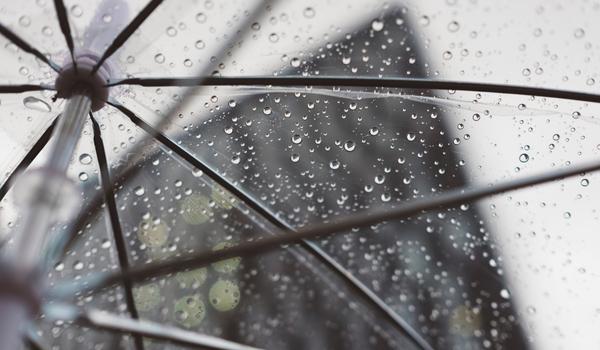Many people are unsure about whether they are allowed to bring an umbrella on a plane, and if so, where they should put it. Additionally, some travelers are worried about the potential damage that an umbrella may sustain during the flight, or that it may be a nuisance to other passengers. This article will clear up any confusion and provide useful tips on how to pack and transport an umbrella while traveling by air. The article will cover the TSA guidelines for umbrellas, the advantages, and disadvantages of bringing an umbrella as a carry-on or checked baggage, umbrella alternatives, international travel considerations, umbrella safety, accessibility, airline policies, weather conditions, and umbrella maintenance.
TSA Guidelines for Umbrellas
Umbrellas are considered personal items, which means that you are allowed to bring one on board in addition to your carry-on and personal item. Umbrellas are also allowed in checked bags, but it’s important to keep in mind that they may be subject to additional screening.
Umbrellas are allowed in both carry-on and checked baggage. You can pack it in your carry-on bag, but if you’re worried about the umbrella taking up too much space, you can also check it in with your double-check. However, it is always a good idea to double-check with the airline you are traveling with to make sure they are not restricted.
Umbrella as a Carry-On Item
The main advantage of bringing an umbrella as a carry-on is that you will have it with you at all times, especially when you need it the most. This is especially important if you’re traveling to a place that’s known for sudden rain showers or if you have an early morning flight and the forecast is for rain. Additionally, if you’re traveling with a lightweight and compact umbrella, it’s easy to pack it in your carry-on bag without taking up too much space.
To make sure your umbrella doesn’t take up too much space in your carry-on bag, consider packing it in a small, compact case. This will also protect it from getting damaged. Another tip is to pack your umbrella in a section of your bag that’s easy to access, so you can quickly grab it in case of sudden rain.
There are many types of travel umbrellas available on the market, but some of the most popular options include compact umbrellas, folding umbrellas, and telescoping umbrellas. Compact umbrellas are small and lightweight, making them easy to pack in a carry-on bag. Folding umbrellas can be folded down to a smaller size, while telescoping umbrellas can be extended and contracted.
Umbrella in Checked Baggage
One of the main advantages of checking an umbrella is that it won’t take up any space in your carry-on bag. This can be especially useful if you’re traveling with a lot of other items and don’t want to sacrifice space for your umbrella. However, the downside is that you won’t have it with you when you need it, and there’s also the risk of it getting damaged during baggage handling.
To properly pack an umbrella in checked baggage, first, make sure it is clean and dry to avoid any staining or mildew issues. Next, wrap the umbrella in a protective covering such as a plastic bag or umbrella sleeve to prevent it from getting damaged during transit. It’s also a good idea to place it in a hard-shell suitcase or bag to provide additional protection.
While airlines take care to handle luggage with care, it’s not uncommon for items to get damaged during transit. Umbrellas, in particular, can be prone to damage due to their size and shape. To minimize the risk of damage, pack the umbrella properly and consider purchasing travel insurance to cover any potential loss or damage.
Umbrella Alternatives
If you’re not comfortable bringing an umbrella or prefer not to, there are other options for staying dry while traveling. Some popular alternatives include rain ponchos, rain jackets, and compact umbrellas.
Compact, foldable rain gear is a great alternative to traditional umbrellas. These items can be easily packed in a carry-on bag and are lightweight and easy to carry. They are also often made of waterproof or water-resistant materials, making them a practical choice for travelers.
While umbrella alternatives may be more convenient to pack and carry, they may not provide as much coverage as a traditional umbrella. Additionally, some people may prefer the classic look and feel of a traditional umbrella. Ultimately, the best option depends on the individual’s personal preference and travel needs.
International Travel Considerations
Umbrella regulations can vary between countries, so it’s important to check with the specific airline or country you will be traveling to. Some countries may have stricter regulations on the size or type of umbrella that’s allowed on a plane, while others may have different regulations for checked vs carry-on baggage.
For international travelers, it’s best to check with the specific airline or country you will be traveling to for any umbrella regulations. It’s also a good idea to pack a compact and lightweight umbrella to make it easier to comply with any regulations. Additionally, it’s a good idea to be familiar with the local weather forecast to ensure you are prepared for any potential rain.
Some international airports may have umbrella rental or purchase options available for travelers. This can be a convenient option for those who prefer not to bring their own umbrella or for those who may have forgotten to pack one.
Umbrella Safety
Umbrellas can present a safety hazard on a plane if they are not stored properly or if they are used in a manner that could harm other passengers. For example, an open umbrella can obstruct the aisle or block the view of other passengers, and a wet umbrella can create slippery surfaces.
To use an umbrella safely while on a plane, make sure to keep it closed while in the cabin and stored it in an overhead bin or under the seat. If it’s raining when you land, wait until you’re off the plane to open it. Additionally, be mindful of the umbrella’s impact on other passengers by keeping it from obstructing the aisle or blocking the view of others.
Different airlines may have their own specific regulations and guidelines for umbrella safety. It’s important to check with the airline you’re traveling with for any specific rules or guidelines. In general, however, it’s important to keep in mind that umbrellas should be stored properly and not used in a way that could harm other passengers.
Umbrella Accessibility
Umbrellas can be accommodated for travelers with disabilities by providing assistance in storing and retrieving the umbrella, and by ensuring that the umbrella does not obstruct any mobility devices.
For visually impaired travelers, accessibility options for umbrellas can include using umbrellas with contrasting colors or patterns or using umbrellas with audio cues to indicate when it’s open or closed.
Some international airports may have umbrella rental or purchase options available for travelers with disabilities. This can be a convenient option for those who may need assistance with storing or retrieving an umbrella.
Umbrella and Airline Policies
Different airlines may have different policies regarding umbrellas. Some airlines may have specific regulations for the size and type of umbrella that’s allowed on board, while others may have different rules for checked vs carry-on baggage. It’s important to check with the airline you’re traveling with for their specific policies.
Some airlines may have similar policies, while others may vary. For example, some airlines may allow small, compact umbrellas in carry-on bags while others may have stricter regulations. It’s important to compare umbrella policies across different airlines to ensure you are compliant with the airline you are traveling with.
While most airline staff will be accommodating and understanding of umbrella policies, there may be some instances where issues may arise. For example, airline staff may not be aware of the specific policies or may have trouble identifying the size and type of umbrella. In these cases, it’s important to be patient and to provide clear documentation of the airline’s policies to resolve the issue.
Umbrella and Weather Conditions

The type of umbrella you choose should depend on the weather conditions you’ll be facing. For example, a compact umbrella may be sufficient for light rain, while a larger umbrella or a poncho may be necessary for a heavy downpour. Additionally, it’s important to consider the wind resistance of the umbrella to make sure it won’t be easily turned inside out.
Different types of umbrellas may be better suited for different climates. For example, a compact umbrella may be the best option for a tropical climate, while a larger umbrella with a sturdier frame may be necessary for a windy, coastal area. It’s important to consider the specific weather conditions of the place you’ll be traveling to in order to choose the best umbrella for your needs.
During extreme weather conditions, it’s important to take extra precautions when using an umbrella. For example, it’s a good idea to avoid using an umbrella in extremely high winds, as it can be dangerous. Additionally, it’s important to make sure the umbrella is securely fastened and to be aware of your surroundings in order to avoid any accidents.
Umbrella Maintenance
Proper care and maintenance can help extend the life of an umbrella and ensure that it’s ready to use when you need it. This includes keeping the umbrella clean and dry, checking for any damage or wear and tear, and making any necessary repairs.
Some common umbrella repairs include replacing broken or bent ribs, tightening loose joints or hinges, and replacing a torn or frayed canopy. It’s important to address any repairs as soon as they are noticed to ensure that the umbrella is in good working condition.
To extend the life of an umbrella, it’s important to store it properly when not in use, avoid leaving it open in strong winds, and regularly check for any damage or wear and tear. Additionally, using a protective cover or sleeve can help protect the umbrella from damage.
Conclusion
In this article, we discussed the TSA guidelines for umbrellas, the pros, and cons of bringing an umbrella as a carry-on or checked baggage, umbrella alternatives, international travel considerations, umbrella safety, accessibility, airline policies, weather conditions, and umbrella maintenance.
Taking an umbrella on a plane can be a useful and convenient way to stay dry while traveling, but it’s important to be aware of the regulations and guidelines for bringing an umbrella on board. By following the tips and advice provided in this article, travelers can ensure that they have a pleasant and comfortable trip, rain or shine.
For more information on umbrella regulations and guidelines for specific airlines, it’s recommended to check the airline’s website or contact their customer service for clarification. Additionally, for more tips and advice on umbrella care and maintenance, there are many resources available online.
